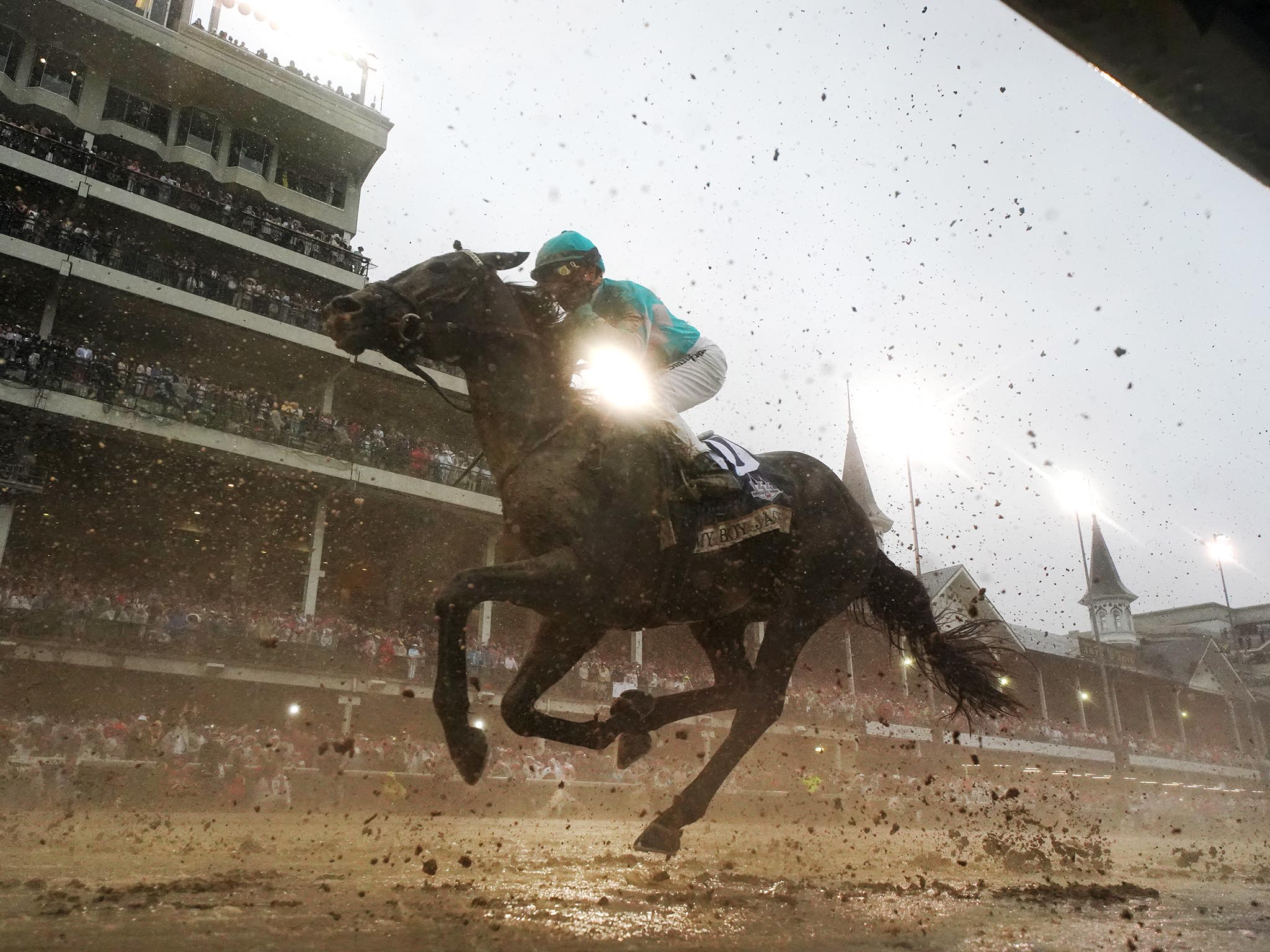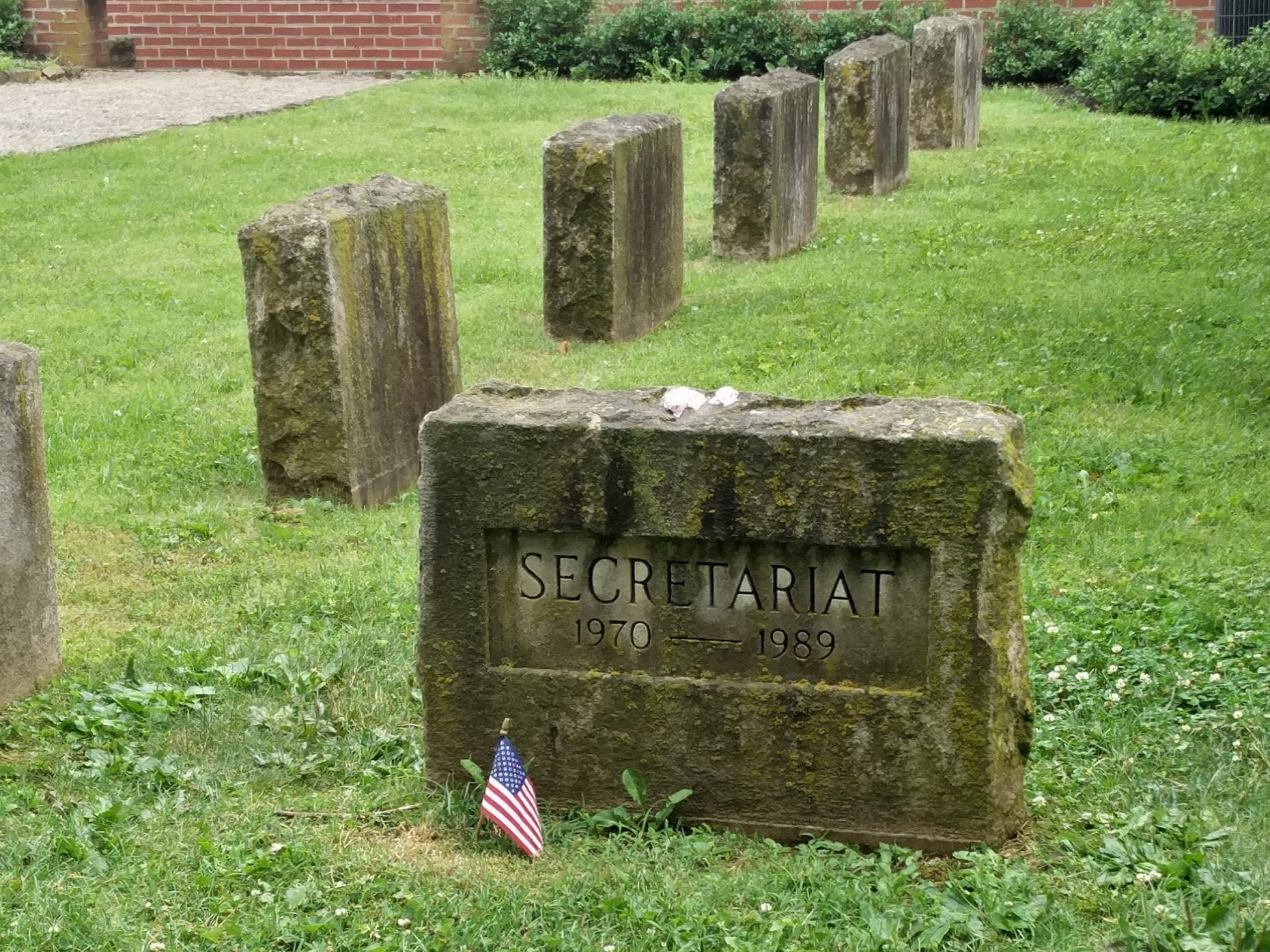Excessive number of horse deaths are killing the US racing industry
As Britain gears up for the 1,000 Guineas race this weekend, Joe Drape speaks to Kentucky breeders about tackling the conditions that saw a shocking 10 deaths a week at US racetracks last year

One hundred and nine years ago, Arthur B Hancock moved his thoroughbred breeding operation atop a slab of mineral rich limestone carpeted by thick, lush bluegrass. He called it Claiborne Farm. It is to horseracing what the New York Yankees are to baseball: the bedrock of more than 75 champions and the land where the immortal Secretariat stood as a stallion.
Now, Walker Hancock, who is the fifth generation of his family to run Kentucky’s Claiborne Farm, is afraid there will be nothing left to pass down to the sixth. This weekend, Britain will be gripped by the 1,000 Guineas Stakes race at Newmarket in Suffolk – where questions may be raised once more about the health of the animals. However, the situation is worse in America. Horses have been dying in high numbers at California’s premier Santa Anita Park track and while nobody knows exactly why, the treatment of the animals – before, during and after racing – is under the harshest scrutiny in years.
“The way it’s going right now, it’s not sustainable,” Hancock says of the sport. “We have to change the public’s perception and clean this thing up if we are going to survive.”
At a recent auction at Keeneland in Lexington, Kentucky, the usual chatter about fast horses getting ready for the Kentucky Derby on Saturday and the other Triple Crown races afterwards quickly gave way to talk about the dead ones at Santa Anita Park in Arcadia, California: 23 of them in a three-month span that has nearly shut down racing in Southern California.
Nearly 10 horses a week, on average, died at American racetracks in 2018, according to the Jockey Club’s Equine Injury Database. That fatality rate is anywhere from two and a half to five times greater than in the rest of the racing world. Outside the US, medications for racehorses are strictly regulated, policed and punished, according to the Jockey Club, among the oldest and most influential organisations in horseracing. Cracking down on drugs is essential, reformers say, because the drugs allow horses to run unnaturally fast and mask pain, which leads to more breakdowns.
This is a crisis for people in the sport whose livelihoods depend on the breeding and nurturing, and the buying and selling, of racehorses.
Although the horsemen are not exactly cosying up to the People for the Ethical Treatment of Animals (Peta), breeders recognise that the concerns the group has raised might be the hammer they need to make changes that will save their sport.
After all those horse fatalities in California, Peta vice-president Kathy Guillermo helped draw up rules at Santa Anita Park governing the use of drugs and whips. The regulations approach international standards and are expected to transform the racetrack into one of the safest and most progressive in the country. Last week, Guillermo, who has family roots in Kentucky and grew up riding hunter jumpers, spoke at a shareholder meeting of racetrack Churchill Downs, home of the Kentucky Derby. She was later asked to meet the racetrack’s bosses.
“You are now dealing with a public that has become intolerant of broken bones, whipping, drugging and death,” Guillermo says. “I make them nervous,” she says of the horse industry, “though we should be on the same side, really.”
Where the horses roam
At Claiborne, leggy foals, one less than 12 hours old, chase their mothers through undulating bluegrass behind wood plank fences. Pickup trucks patrol its 3,000 acres and pass structures that date to the 1700s. It takes 100 employees to keep the farm humming and the nearly 400 horses cared for.
In the stallion barn stands War Front, who commands $250,000 (£191,000) per mating and is the sire of the Omaha Beach, the Kentucky Derby favourite until a respiratory illness meant the horse could not compete. However, War Front is also the sire of War of Will, who’s still in the running. Two other horses from Claiborne sires, Cutting Humour and Tax, are in the Derby field, which means a good proportion of the starters were bred here.
Claiborne is the centre of a $5.2bn (£4bn) ecosystem that puts 61,000 people to work on more than 831,000 acres. But for how long?

Horseracing has been on the decline for nearly two decades. In 2002, more than $15bn was bet on races in the US. Last year, the handle fell to $11bn. In 2002, nearly 33,000 thoroughbred foals were registered as racehorses, compared with 19,925 last year.
In the late 1980s, Rob Whiteley, who taught counselling psychology at Rutgers University before entering the horse business, helped transform Carl Icahn’s Foxfield thoroughbred operation into a moneymaking commercial breeding concern. Then he struck out on his own, bred 19 Grade I winners and landed on the important industry boards that consider rules about the treatment of horses.
“They truly ignored the negative trend in perception and lived in a bubble of self-deception, either not caring or not grasping how many people were turned off by the uses of drugs and the sight of riders hitting horses with whips,” says Whiteley, who sold his horses in 2012, unable to weather the financial crisis. “I could not recommend anyone coming into the business.”
There have been plenty of promises of reform from a who’s who of industry stalwarts and racetracks, but even the smallest steps towards adopting tougher rules have been met with outrage and threats of lawsuits from veterinarians, owners and trainers’ groups.
In 2012, Arthur B Hancock III and his wife Staci founded the Water Hay Oats Alliance (Whoa) with the mission of getting drugs out of racing. The group quickly grew to more than 1,800 industry members. It lobbied statehouses and regulators and went public with some of the sport’s dirtiest laundry to try to shame horsemen, veterinarians, politicians and regulators into treating thoroughbreds like athletes rather than commodities filled with a smorgasbord of anti-inflammatories and painkillers.
Whoa, along with the Jockey Club, helped shape a federal bill introduced in March with bipartisan support to create a uniform national standard for drug testing and medication rules in racehorses that would be overseen by the US Anti-Doping Agency (Usada). The bill is backed by owners and breeders’ associations, animal welfare groups and racetracks, including the Stronach Group, which owns Santa Anita Park, and the New York Racing Association, the hosts of the Preakness Stakes and the Belmont Stakes races.
Notably, Churchill Downs and senator Mitch McConnell, the Senate majority leader, who counts the company among his top patrons, do not support the bill. “He politely and candidly told us that he appreciated what we were trying to do, but until Churchill got involved he couldn’t push the bill,” says Hancock, who said he met the senator in 2016. McConnell declined to comment.
You can’t tell me that the trainers and veterinarians and racetracks have done all that they can to protect the horses
In a statement, Bill Carstanjen, chief executive of Churchill Downs, said the company had reviewed the bill and requested changes that were not addressed. “We don’t believe a federal bill is practical, reasonable or imminent,” he says.
In a memo obtained by The New York Times that lays out why Churchill Downs opposes the bill, the company cites costs and the fact that trainers and veterinarian groups are against the measure. It also asks whether having the support of the Humane Society of the United States is “letting the fox in the henhouse”.

The company also points to the anti-doping agency’s role in bringing down cyclist Lance Armstrong, suggesting Usada might find much wrong and could not be trusted to keep information out of the public eye. Its memo asks: “While many point to Usada’s efforts in Lance Armstrong’s lifetime ban from cycling as a positive point in its favour, what consequences have there been as a result? Cycling has taken a beating as a participatory and commercial endeavour.”
The Louisville Courier-Journal recently proclaimed Churchill Downs one of the “deadliest racetracks” in America and reported that the track had lost 43 thoroughbreds to racing injuries since 2016, an average of 2.42 per 1,000 starts, which was 50 per cent higher than the national average.
Under pressure from animal rights groups and a growing public perception that horseracing is cruel, Churchill Downs recently joined a coalition of racetracks that is seeking a ban on race-day medication for all of their two-year-old races beginning next year. They want to extend that practice for stakes races – the sport’s highest level – in 2021. Churchill Downs also announced it would build an $8m equine hospital, hire an equine medical director and create a national Office of Racing Integrity to develop best practices and research. But it still declines to endorse the bill.
“With their track record, they should be running towards this legislation,” Arthur Hancock says. “This is a life raft being thrown from the Titanic, but instead you have 55 different fiefdoms all going their own way while our history is going down.”
After the filly Eight Belles broke her ankles at the finish of the 2008 Kentucky Derby and was euthanised, Guillermo made safer, more humane horseracing a priority. She lives in Northern California, where the animal rights movement is particularly strong. In California, just 600,000 signatures on a petition would prompt a ballot initiative on whether horseracing should continue to exist. That prompted the Stronach Group to issue the strongest rules on the care of horses in the US.
Guillermo is not done. She wants the sport to eliminate all medications in the two weeks before a race, bar trainers with multiple medication violations, mandate complete public transparency of injury and medication records, end whipping and switch to high-quality synthetic tracks.
“You can’t tell me that the trainers and veterinarians and racetracks have done all that they can to protect the horses,” she says.
The deaths at Santa Anita have prompted an investigation by the Los Angeles County District Attorney’s Office; condemnations from elected officials including senator Dianne Feinstein; and calls to shut down the sport altogether.
“We can’t let that happen,” Walker Hancock says.
Like his father Seth and uncle Arthur, Walker Hancock was born in Kentucky in a house that has stood on the bluegrass since 1865. Like them, he has mowed its 3,000 acres, thrown countless tons of hay and pulled foals from mares, watching them grow into racehorses. Like them, he recognises the paradox that what built one of America’s oldest sports – the love of the thoroughbred – has the potential to put it out of business.
“We have to start proving that we are doing all that we can to do the best for these horses,” he says. “If not, we are out of business and we should be.”
© New York Times
Join our commenting forum
Join thought-provoking conversations, follow other Independent readers and see their replies
Comments
Bookmark popover
Removed from bookmarks